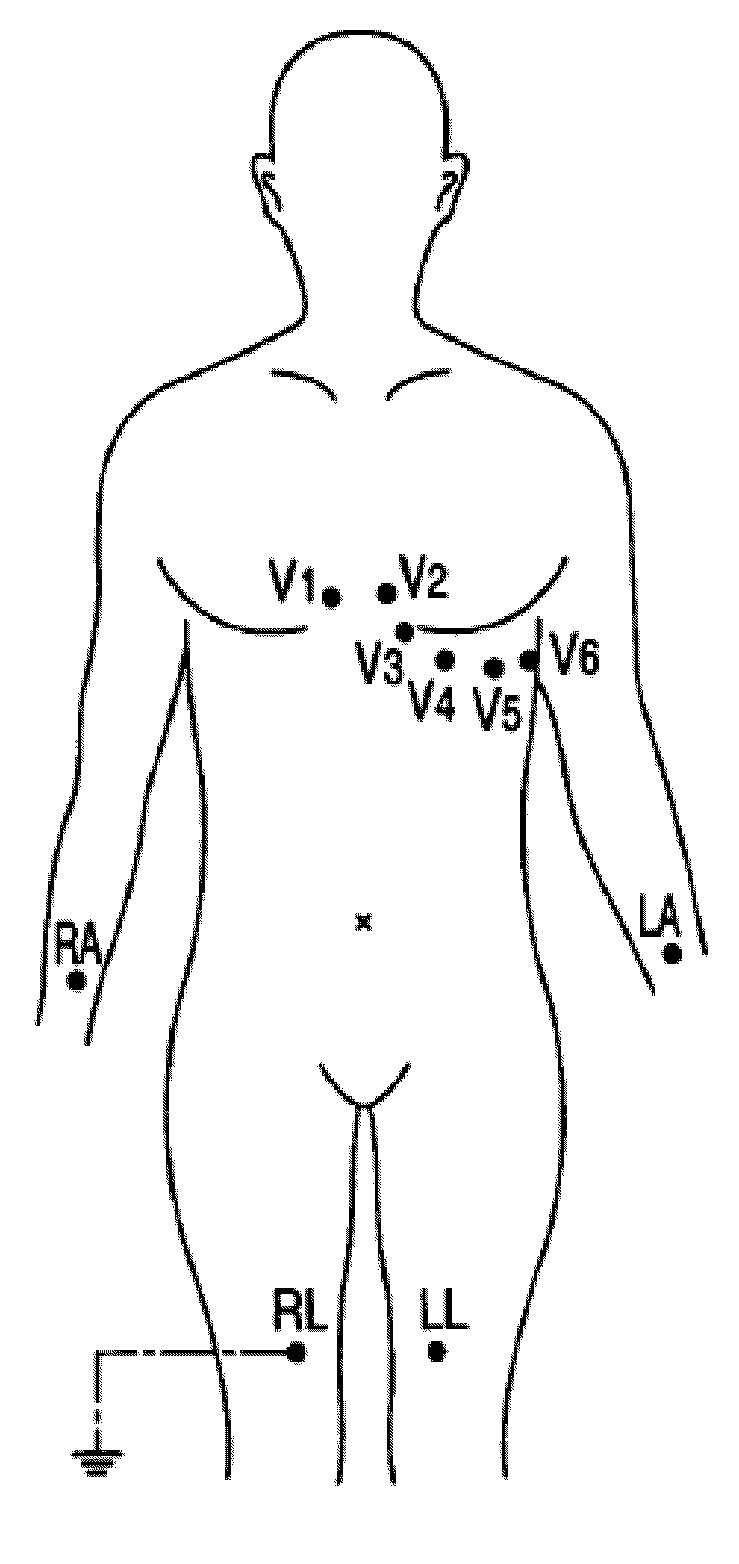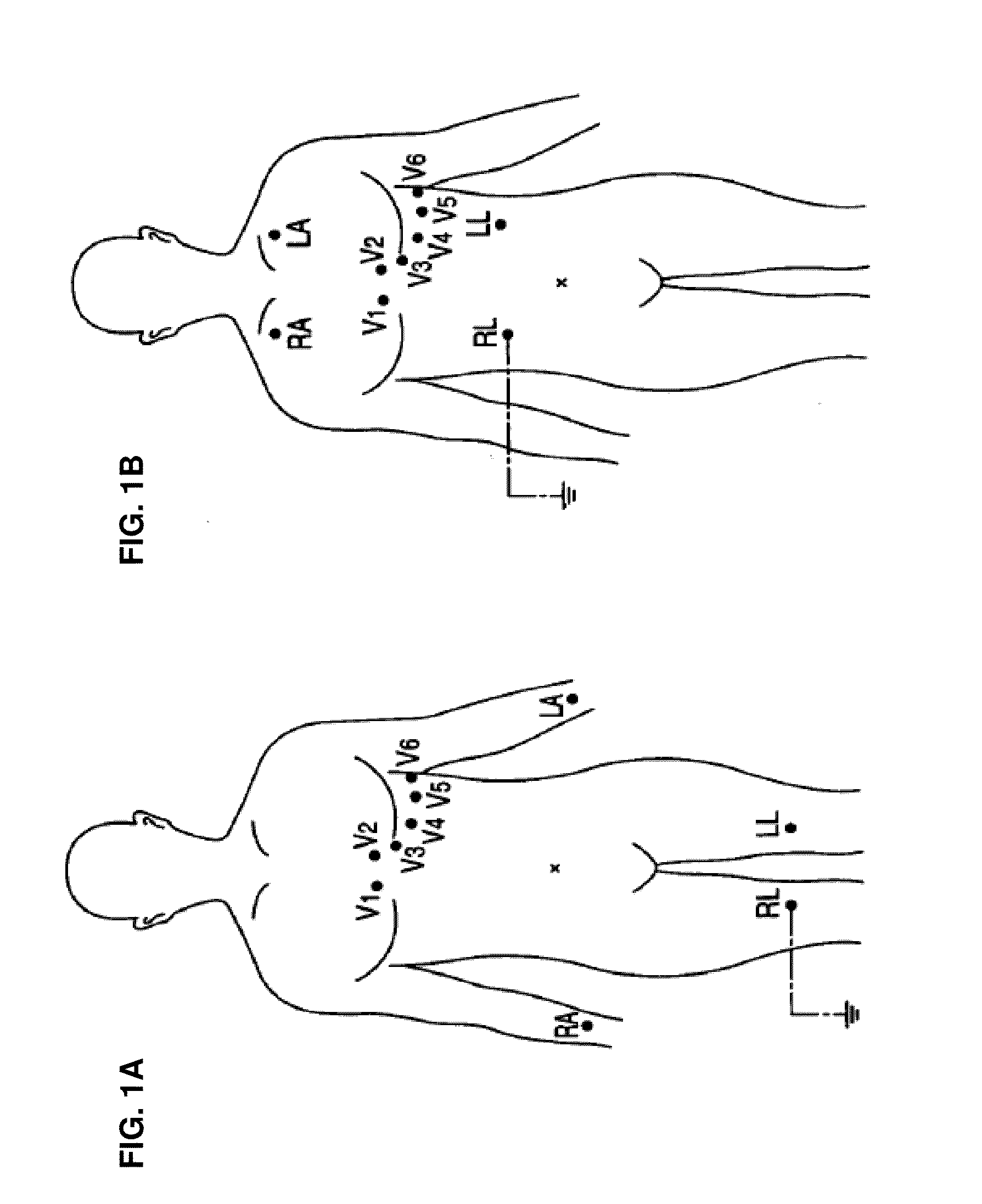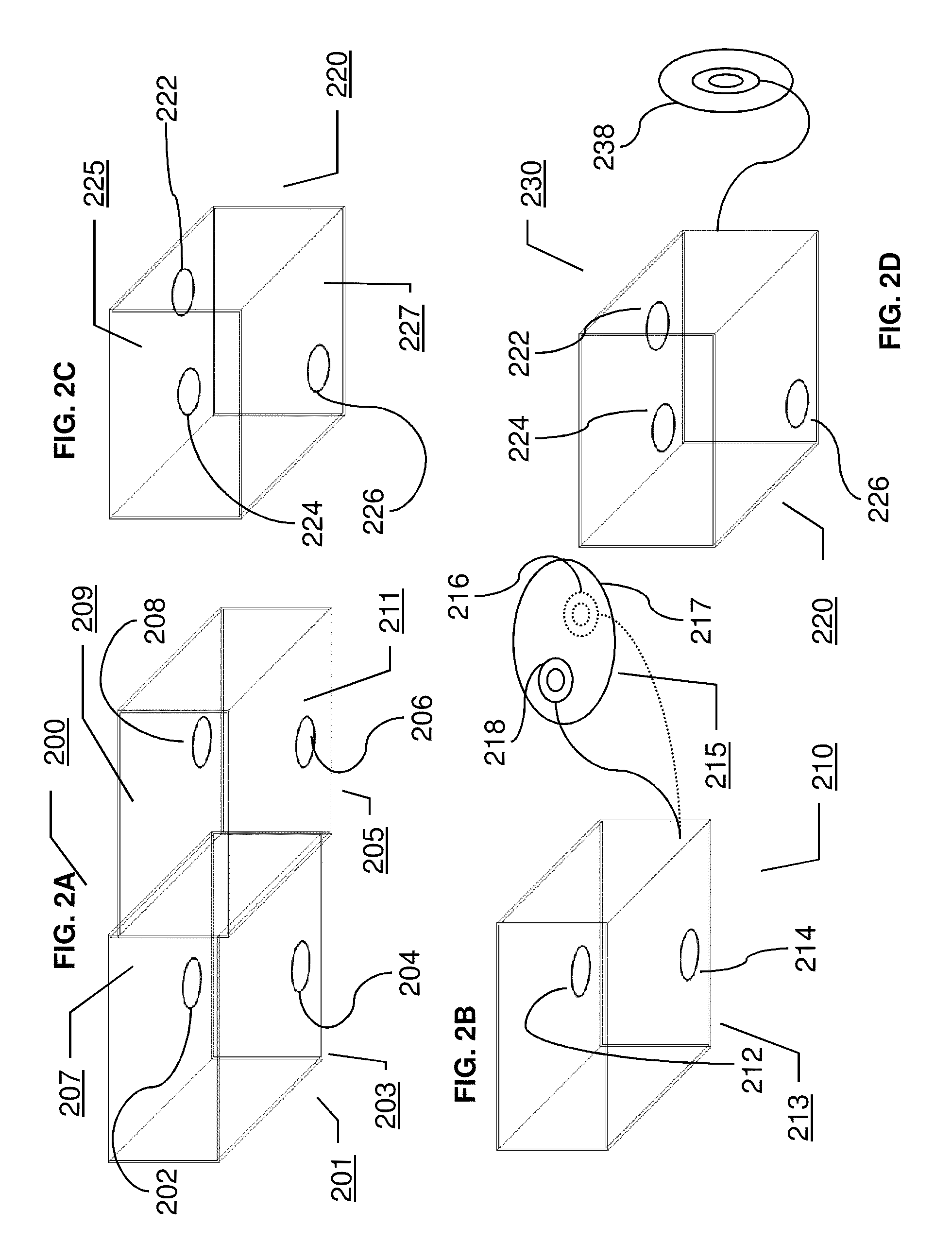[0018]The present invention overcomes these disadvantages of the background art by providing a device, system and method for obtaining a 12 lead electrocardiogram (ECG) from measurements obtained with 3 electrodes in some embodiments (it should be noted that some separate embodiments of the present invention relate to such measurements with 4 electrodes). Optionally and preferably, the device, system and method of the present invention may be easily and accurately operated by a layperson. Hereinafter, the term “layperson” refers to any individual without any substantial
medical training.
[0034]Preferably, two electrodes are located on one face of the unit, so that one
electrode is in contact with one arm and the other
electrode is in contact with the other arm. A second face of the unit preferably includes one
electrode (the third electrode) which is preferably initially in contact with the user's lower
torso or leg. By placing the electrodes as described above, a recordation of the limb leads is preferably performed. In order to
record the precordial limbs, the unit is then preferably moved to the user's upper
torso. The hands are still preferably in contact with each of the two electrodes (located on the first face), but the third electrode (located on the second face) is now preferably in contact with the upper
torso. By now moving the unit across the chest, each location V1 through to V6 is preferably in contact with the third electrode in turn (again, these locations are given as examples only without any intention of being limiting, as the device may optionally monitor electro-cardiac signals from all over the upper torso area, and is not necessarily limited only to the traditional V1 to V6 locations). Optionally, the potentials monitored from the limb leads may be stored in the device and are then preferably combined with the recorded V1 to V6 locations to further increase the accuracy of the precordial leads calculation.
[0070]The device of the present invention preferably comprises memory. The memory may optionally store
medical information, and is preferably used to store
medical history, most preferably including information regarding the cardiac history and status of the user (including but not limited to catheterization results, prior ECG's, echo results, stress test results and the like). The data can optionally be stored as video (for example for an angiogram, echocardiogram etc), images (for example CT, MRI), audio information and so on. Comparing the current ECG recording to the previously obtained ECG, which is stored in the device's memory, may increase specificity and sensitivity of diagnosis of cardiac abnormalities. Additionally the user's
medical history may optionally and preferably be accessed in case of an emergency by medical personnel and may also be used for identifying the specific user. Optionally this memory also stores the upper torso locations as described above.
[0079]The device of the present invention may provide the option of performing many additional cardiac diagnostic tests some of which may require
continuous use, for example including but not limited to performing a
continuous type of monitoring known as a Holter test, or a stress test. Without wishing to be limited in any way, it should be noted that the test as described herein with the present invention may optionally be performed in a setting that is convenient and comfortable to the user, eliminating or at least reducing the need to perform these tests in a
hospital setting. Such a test could optionally be performed as a “self” stress test which the user performs according to one or more instructions from the
software.
[0080]Optionally the device may include communication with one or more other accessories (whether external or internal), such as a Pulse Oximeter,
stethoscope,
ultrasound transducer, echocardiogram
transducer,
thermometer, capnograph,
blood pressure cuff,
fetal heart rate
transducer, camera, defibrillator electrodes, wire electrodes,
inhaler, cardiac
enzyme detector,
blood sugar level analyzer and so forth. These accessories may, alternatively, be connected to the device optionally through one of the I / O plugs or wirelessly. The additional accessories may improve the diagnostic ability of the device and provide a well rounded depiction of the user's
state of health.
[0081]The above mentioned
ultrasound transducer may utilize the device's
navigation system in order to reach the
conventional ultrasound locations. The
ultrasound may monitor different heart functions (such as the motion of the walls, the valve functions etc.). The device is preferably able to compare between the stored ultrasound parameters and the acquired real time parameters which for increasing the sensitivity of detection of heart abnormalities. A
stethoscope may optionally be used in a similar manner for locating the monitoring points using the
navigation system.
 Login to View More
Login to View More  Login to View More
Login to View More 


